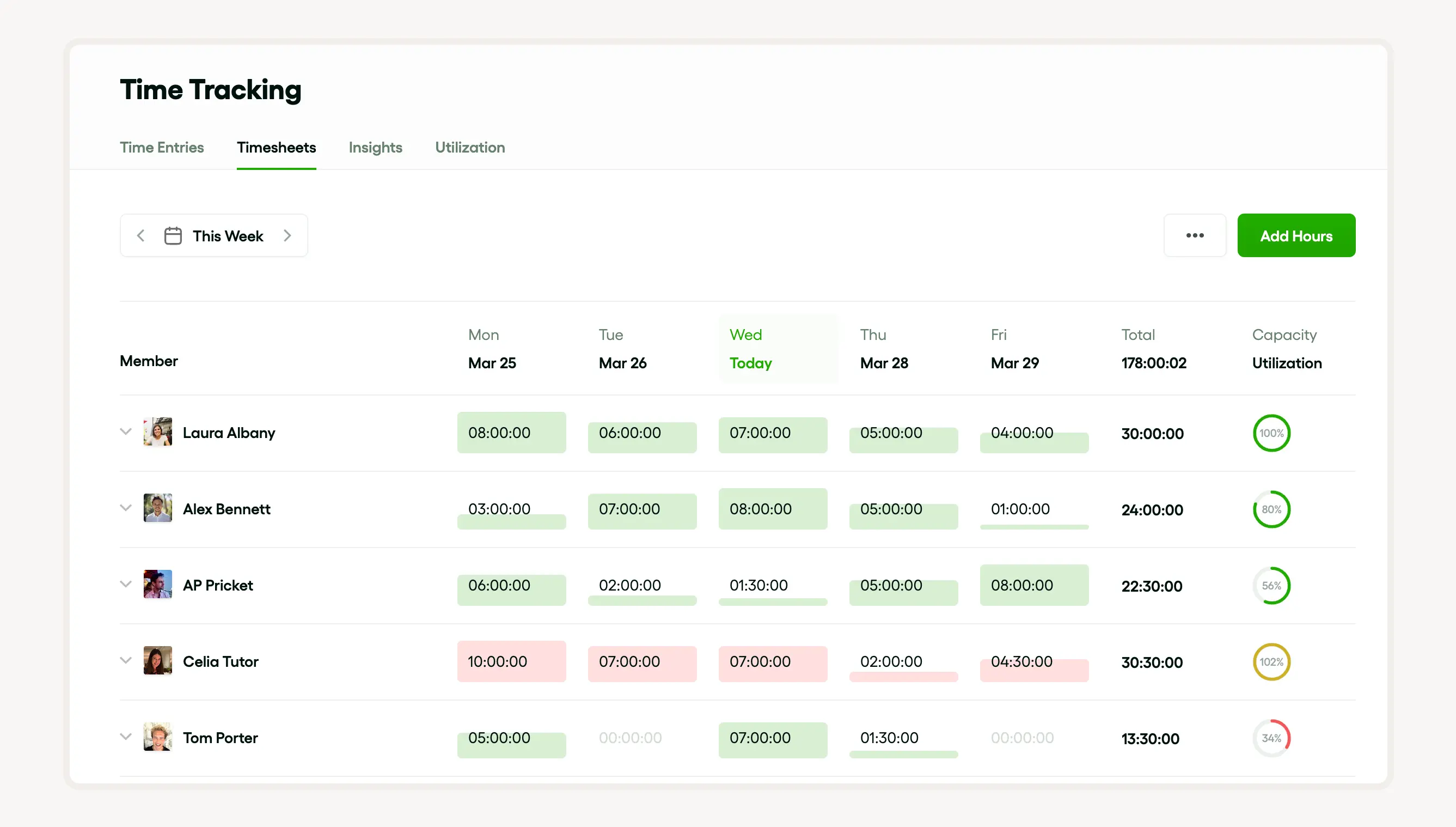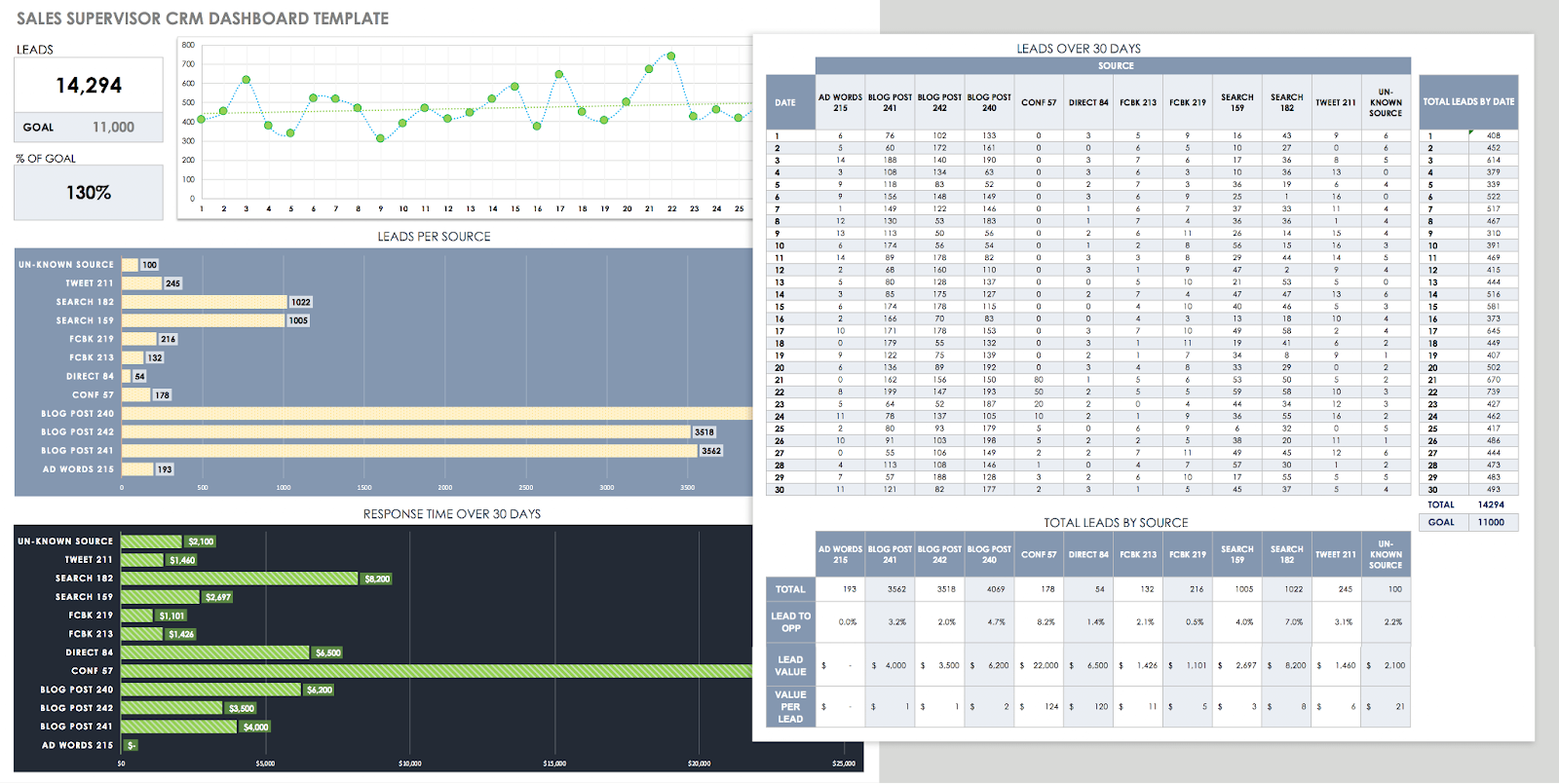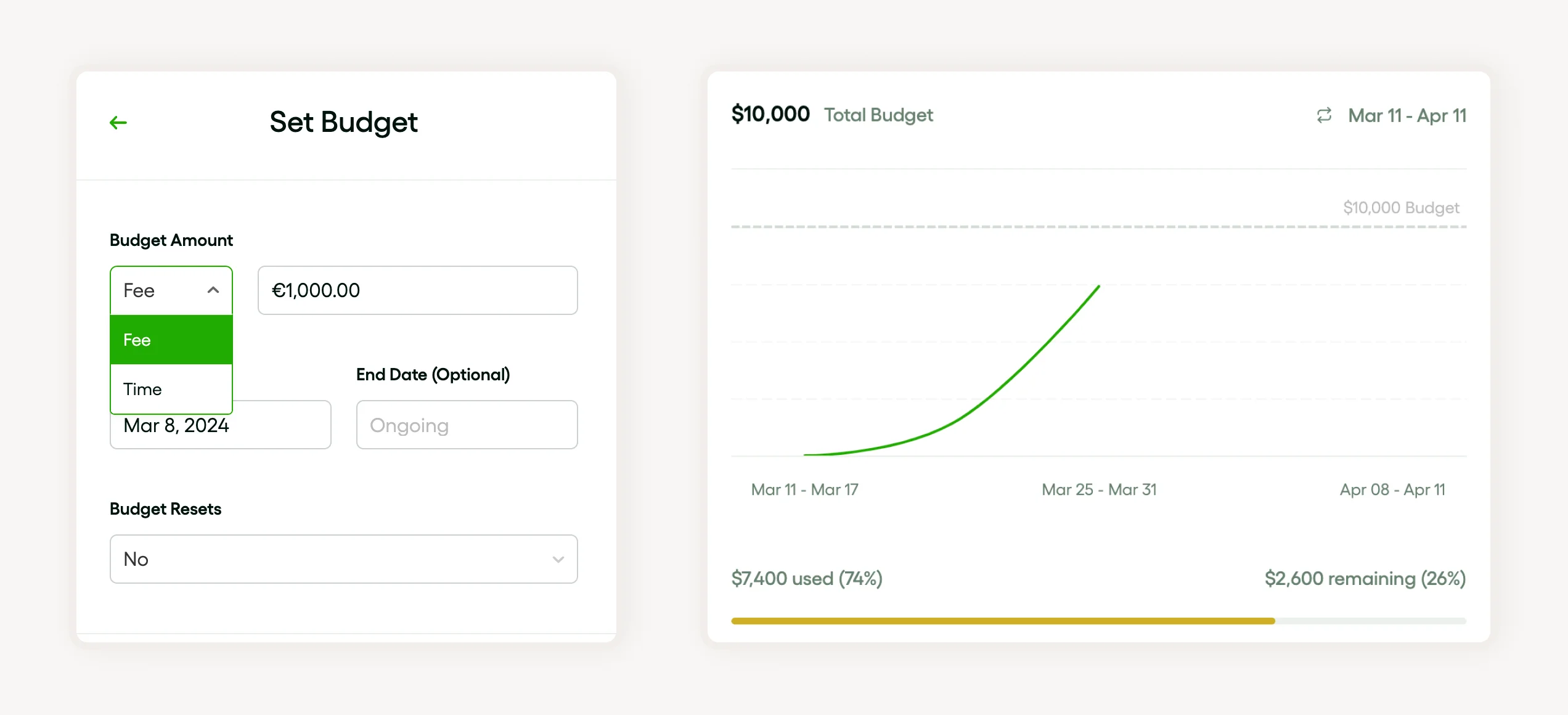AI-powered project management software will revolutionize businesses in 2025, significantly enhancing resource utilization and project planning. Predictive analytics, resource management, and project management tools will deliver precise business forecasting, enabling refined financial planning.
Budget tracking and financial projection features will streamline financial operations and sculpt financial performance. These data analysis tools, when integrated into enterprise resource planning systems, will transform financial management and budgeting, thrusting businesses into a future of automation and precision-driven performance.
Understanding the importance of project forecasting software
Project forecasting software is pivotal in business operations like financial planning, resource management, and project management. By enabling sales forecasting and demand forecasting, these tools contribute to sharper financial projections. Budget tracking features further bolster effective financial budgeting, underpinning overall financial performance and management.
Moreover, these tools’ integration with enterprise resource planning systems simplifies financial operations. Investing in project forecasting software thus becomes a strategic move, leveraging predictive analytics to enhance decision-making and operational efficiency.
Role of project forecasting in successful project management
Project forecasting is essential for successful project management, encompassing business forecasting, financial planning, and resource management—key elements to achieve project goals within budget and time. It's also crucial to keep track of your project's progress, which can be effectively done with a well maintained project status.
Predictive analytics and data analysis tools equip project managers with insights for robust financial operations, reducing surprises, and planning enterprise resource planning more effectively while keeping a precise track of the project budget.
Financial projections also play a part in assessing financial performance, aiding in sales forecasting, demand forecasting, and comprehensive financial management, thereby increasing the chances of project success.
Benefits of using project forecasting software
Project forecasting software brings a wealth of benefits to businesses. It refines project management by offering predictive analytics and effective data analysis tools, crucial for financial planning and budget monitoring. Businesses can harness this software for strategic forecasting, using financial projections to boost financial performance.
These tools also support resource management and enterprise resource planning, enabling companies to allocate work resources more productively. Sales forecasting and demand forecasting features allow businesses to adjust their strategies, enhancing financial operations and simplifying financial management. Therefore, project forecasting software investment is instrumental in achieving efficient financial budgeting.
Key features to look for in project forecasting software
When selecting project forecasting software, look for advanced predictive analytics functionalities which take historical data into account for future predictions. This helps in generating accurate financial projections and business forecasting.
The software should have superior resource management and data analysis tools to ensure efficient distribution of resources and to extract meaningful insights from collected data. Also, ensure the software is efficient in budget tracking to maintain and improve financial performance.
In terms of financial management, the software should be able to seamlessly integrate with enterprise resource planning systems. Other important features to look for are sales forecasting and demand forecasting abilities, they are especially relevant for sales-driven businesses and financial operations to anticipate income and templates for financial budgeting which aid in economic financial planning.
Real-time data analysis and reporting

Real-time data analysis and reporting are vital components of business forecasting and project management. They offer an exact view of a business's financial performance, thus facilitating effective financial planning and budgeting.
With advanced data analysis tools, companies can gain real-time financial projections, aiding in resource management and budget tracking.
Moreover, these strategies are often implemented using enterprise resource planning systems. They offer predictive analytics and aid in phenomena like sales forecasting and demand forecasting. In essence, real-time data analysis and reporting significantly enhance an organization's financial operations and financial management.
Integration with other project management tools
Integration with other project management tools is crucial for effective business forecasting and financial planning. Through comprehensive integration, these tools can enhance resource management and budget tracking. They enable teams to efficiently manage assets, stay within set financial boundaries, and forecast future trends using predictive analytics.
Such integrations also improve financial projections due to the seamless transfer and analysis of data. For example, data analysis tools and enterprise resource planning platforms can interlink to provide insights that drive sales forecasting, demand forecasting, and overall financial performance.
With a well-integrated system, businesses can streamline their financial operations and management, making financial budgeting easier and more accurate. This offers a holistic and scalable solution to handle the financial aspects of project management.
Scalability and customizability
The world of business forecasting and project management has been transformed by the power of scalability and customizability. This offers businesses the ability to expand their operations and resources in tandem with growth while also tailoring services to fit their unique needs.
Tools like enterprise resource planning offer customization to suit different financial operations, facilitating tasks such as budget tracking and financial planning.
On the other hand, scalability can be seen in data analysis tools and predictive analytics which can work with diverse scales of data to provide accurate financial projections and sales or demand forecasting.
These scalable and customizable systems thereby contribute positively to the overall financial performance and financial management of an organization.
Top project forecasting software
Project forecasting software plays a pivotal role in today’s business landscape. These tools leverage predictive analytics and data analysis to streamline critical processes such as business forecasting, financial planning, and resource management. Let’s talk about the top contenders that empower organizations to navigate the complexities of project management effectively.
1. Bonsai: Best project planning solution

Having the right tools for project planning and management changes everything. Bonsai comes out as the top-most solution providing almost all the features that are meant to enhance your workflow and manage your projects efficiently. Here’s why Bonsai is the best choice of solution when it comes to project planning:
- Project management: Bonsai excels in project and task management with its intuitive tools designed for seamless planning, execution, and tracking.. Its streamlined approach ensures efficient handling of every project aspect, from setting timelines to monitoring progress.

- Time tracking: You can track your projects in real-time, ensuring that every hour is accounted for. This feature not only helps to ensure that deadlines are met but also helps the project manager to see where time is going and what is being done at different times and across various projects.

- Financial management: Bonsai saves users the time and effort needed to perform financial related tasks especially for billing clients and processing payments using sophisticated billing and invoicing features. You can bill hours by just a few clicks or create invoices happily making sure you get paid on time and control your records well.

- Real-time reports: Bonsai's real-time reporting tools provide instant insights into your project's status, budget, and performance. With detailed, up-to-the-minute data, you can make informed decisions quickly, stay on track, and ensure timely project completion. Optimize your workflow and boost efficiency with Bonsai's powerful real-time reports.

Bonsai’s all-in-one platform is designed to enhance every aspect of project management, from planning and tracking to financial oversight. Bonsai integrating project management platform addresses all. Its user-friendly interface and powerful features make it an indispensable tool for businesses of all sizes. No matter you are a professional service providers, small agency, or working in a complex of a larger organization, Bonsai provides tools and the ability to manage projects and meet goals.
2. Microsoft Project

Microsoft Project stands tall as a robust project management tool, purpose-built to empower managers in steering projects with precision. Its integrated platform seamlessly combines business forecasting, financial planning, and resource management.
Here’s why it’s indispensable for project planning and execution:
- Budget Tracking and Beyond: Microsoft Project excels in budget tracking, ensuring financial transparency throughout the project lifecycle. But its prowess extends beyond mere numbers.
- It provides predictive analytics and powerful data analysis tools, enabling accurate financial projections. This holistic approach enhances enterprise resource planning, sales forecasting, and ongoing monitoring of financial performance.
3. Smartsheet

Smartsheet emerges as a versatile ally for project management, business forecasting, and financial planning. Its robust suite of features caters to both financial management and operational efficiency:
- Data-Driven Financial Management: Smartsheet’s data analysis tools empower efficient financial operations.
- From sales forecasting to demand forecasting, it ensures precision. But that’s not all—resource management and budget tracking also fall within its purview. Businesses can optimize productivity and elevate forecast accuracy using Smartsheet.
4. Oracle’s Primavera P6

When comprehensive capabilities are non-negotiable, Oracle’s Primavera P6 steps into the spotlight. This solution seamlessly integrates project management, financial planning, and resource management.
Here’s why it deserves your attention:
- Precision in Financial Projections: Primavera P6 doesn’t just forecast; it predicts with finesse. Its robust features encompass business forecasting, predictive analytics, and data analysis tools. The result? More accurate financial projections and improved overall financial performance.
- Operational Efficiency Amplified: Beyond financial projections, Primavera P6 excels in financial operations management and budgeting. It’s the secret for organizations seeking seamless financial management across the board.
5. Procore

Procore brings a powerful suite of project management and financial planning tools to the construction industry. Some of its capabilities include resource management, budget tracking, and financial projections.
Procore’s platform, with its robust data analysis tools, improves financial performance by providing business forecasting and demand forecasting capabilities.
Furthermore, Procore aids in more accurate financial budgeting and management, thus streamlining financial operations. Offering enterprise resource planning features, it provides a comprehensive view of the entire project, enhancing sales forecasting and predictive analytics. Procore is indeed a game-changer in managing complex construction projects.
6. Workfront

Using Workfront caters numerous benefits in terms of project management and enterprise resource planning. It provides a robust platform for business forecasting, financial planning, and predictive analytics that boosts the overall financial performance of the enterprise.
Further, it streamlines financial operations with features like budget tracking and resource management. The data analysis tools enable clear financial budgeting and financial management, empowering organizations with precise demand forecasting, sales forecasting, and financial projections.
Choosing the right project forecasting software for your agency
Project forecasting software provides a comprehensive view of ongoing projects. Using a creative agency project management software can significantly enhance the accuracy of these projections. This, in turn, facilitates better planning and resource allocation for future projects.
Selecting the appropriate project forecasting software can significantly enhance business forecasting, project management, and financial planning processes within your agency. Let’s explore the key features to consider and how they align with your agency’s specific needs.
1. Demand forecasting, resource management, and budget tracking

When evaluating project forecasting software, keep an eye out for these essential features:
- Demand Forecasting: Accurate predictions of future demand are crucial for effective resource allocation and planning. Look for software that can analyze historical data and provide actionable insights.
- Resource Management: Efficiently managing your agency’s resources ensures smooth operations. Seek software that allows you to allocate resources effectively, avoiding bottlenecks and overcommitment.
- Budget Tracking: Real-time tracking of project budgets helps prevent cost overruns. Choose software that provides clear visibility into budget utilization.
2. Advanced data analysis and predictive analytics
To stay ahead, opt for software that includes:
- Data Analysis Tools: These tools allow you to extract meaningful insights from your data. Whether it’s identifying trends or understanding customer behavior, robust data analysis is essential.
- Predictive Analytics Utilities: Predictive models help you anticipate future scenarios. Look for software that can forecast project outcomes, revenue, and resource requirements.
3. Enriching enterprise resource planning (ERP)
Your chosen software should seamlessly integrate with your agency’s ERP system. It should:
- Enable Accurate Financial Projections: A well-integrated solution ensures that financial data flows seamlessly between systems, allowing for precise projections.
- Assist in Sales Forecasting: Accurate sales forecasts drive strategic decisions. The software should provide insights into market trends and customer behavior.
- Streamline Financial Operations: From invoicing to expense tracking, the software should simplify financial processes.
- Advance Financial Management and Budgeting: Look for features that facilitate budget creation, monitoring, and adjustments.
4. Evaluating software based on budget and ROI

Financial planning and budget tracking are critical during evaluation:
- Data-Driven Approach: Utilize predictive analytics and data analysis tools to create accurate financial projections. Ensure that the software aligns with your budget constraints.
- Project Management Efficiency: Successful project execution contributes to a positive ROI. Evaluate how the software streamlines project workflows.
- Financial Performance Metrics: Consider sales forecasting and demand forecasting within the context of enterprise resource planning. A holistic view of financial performance is essential.
5. User-friendliness and training requirements
A user-friendly tool saves time and reduces errors:
- Minimal Training: While some features may require training (such as predictive analytics), prioritize ease of use. Quick adoption leads to faster benefits.
- Informed Decision-Making: Intuitive project management features empower resource allocation decisions.
- Accurate Financial Projections: With capabilities like business forecasting and sales forecasting, your team can make informed decisions promptly.
Future trends in project forecasting software
In the future, project forecasting software will lean heavily on data analysis tools and predictive analytics to produce more accurate financial projections and demand forecasting. As part of enterprise resource planning, the software will use Artificial Intelligence to refine its financial performance predictions and enhance resource management.
Another trend to watch out for is the integration of project management and sales forecasting functionalities. This will allow for effective budget tracking and financial planning, leading to more efficient financial operations and financial management.
On a final note, evolving data privacy regulations will influence how this software is designed and deployed. Developers will have to strike a balance between leveraging data for financial budgeting and adhering to data privacy laws.
Increased Use of cloud-based solutions
The rise in the adoption of cloud-based solutions has revolutionized various areas of businesses, including financial planning, project management, and resource management. These services use advanced predictive analytics and data analysis tools that facilitate more accurate financial projections and business forecasting.
Such platforms also aid in sales and demand forecasting, financial performance tracking, and budget tracking, making them vital additions to any enterprise resource planning strategy. By implementing these solutions, companies can streamline their financial operations, make more informed decisions, and optimize financial management and budgeting.
Integration of advanced analytics and big data
Integrating advanced analytics and big data leads to substantial improvements in various sectors such as project management, financial planning, and resource management. It offers access to data analysis tools that enable predictive analytics. This aids in business forecasting, sales forecasting, and even demand forecasting, resulting in enhanced financial performance.
Through enterprise resource planning, one can monitor financial operations effectively, improving financial management and financial budgeting. Using advanced analytics can further refine financial projections and budget tracking. Overall, the integration significantly contributes to highly accurate and dynamic planning processes.
Shift towards more collaborative project management
In recent times, a trend towards more collaborative project management has emerged. This trend predominantly influences areas such as financial planning, business forecasting, and resource management. Adaptations include integrating data analysis tools into operations and leveraging predictive analytics for financial projections.
Such improvements in project management also upgrade the effectiveness of financial operations and management. Enterprise resource planning, budget tracking, and demand/sales forecasting are also greatly influenced by this collaborative paradigm, directly impacting financial performance and financial budgeting.
Conclusion: Preparing your agency for the future with project forecasting software
To optimize financial performance, business forecasting using project management is now a necessity. The use of project forecasting software revolutionizes resource management, enhances financial planning, and strengthens financial management.
This tool provides predictive analytics for demand forecasting, helps in sales forecasting, and improves financial operations with its data analysis tools. An intuitive budget tracking feature allows effective financial budgeting. Your agency is guaranteed a future-proof system with its enterprise resource planning capabilities. Elevate your agency today with project forecasting software.







